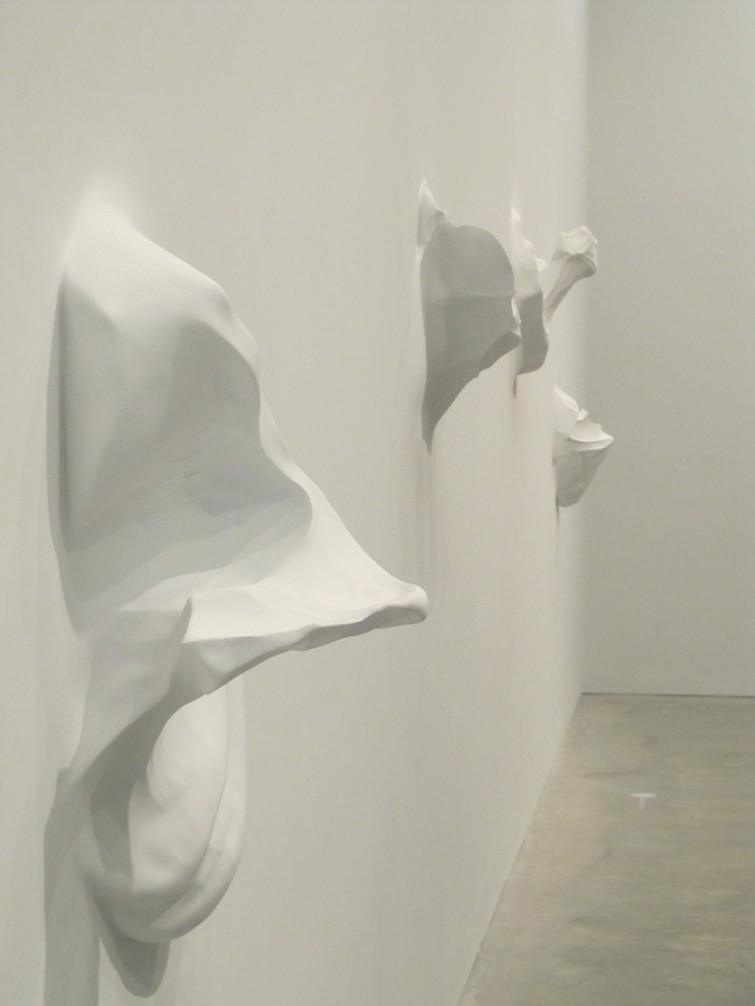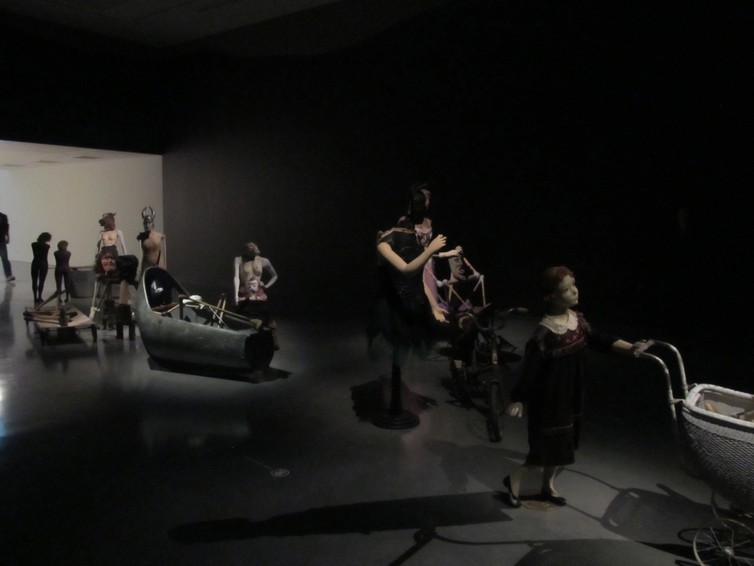Enjoy
Blog
Contents
Possible Composition: The 18th Sydney Biennale
July 26 2012, by Emily Goldthorpe
At the Museum of Contemporary Art in Sydney, the personal and the collective is brought together in an exhibition titled Possible Composition as part of the 2012 Biennale of Sydney. All Our Relations, the eighteenth Sydney Biennale, “focuses on inclusionary practices of generative thinking, such as collaboration, conversation and compassion, in the face of coercion and destruction.”
Confronting the growing fragmentation of communities and societies in the modern world, All Our Relations encourages us to re-evaluate the importance of our relationships with others and with our shared world. Accordingly, Possible Composition is a highly inter-connective exhibition, with the works by diverse international artists often appearing to have evolved harmoniously to create an atmosphere of accidental collaboration and unity.

Alwar Balasubramaniam, Nothing From My Hands, 2011-12.
Using plaster-casting methods, Alwar Balasubramaniam has created sculptures from the traces and the folded space between his hands that protrude from the gallery wall in a way that distorts both positive and negative space. For Nothing From My Hands (2011–12), the artist employed his own body as medium, using fibreglass models which are then plastered and painted white to be incorporated quite seamlessly with the gallery wall. The artist states: “These works are an effort to define the space in which one’s self ends and the other begins.”2 Balasubramaniam’s work is deliberately impersonal in its abstract forms. While the artist used his body to make these sculptures, the resulting shapes are made from the space created when his hands are clasped together, a space that ceases to exist when the artist unclasps his hands. Therefore, although his body is the medium, the sculptures have captured the space outside of his body, combining the individual self and the other. By casting the sculptures in this way the inside has become the outside, and empty space has been transformed into concrete form.

Judith Wright, A Journey, 2011.
What we touch with our hands is also the concern of artist El Anatsui. Anatsui “explores ideas of history, colonisation, contemporary consumption and globalisation through his large-scale sculptural works.”3 Constructed from discarded items that litter the town of Nsukka, Nigeria, in which he lives and works, Anatsui’s sculptures transform the detritus of living into an interrogation of consumerism and the impact colonisation has had on Nsukka. Bottle tops and cans are the primary material for the artist’s large scale sculptures at the Museum of Contemporary Art. Mounted on the wall they appear from a distance as colourful woven cloth, heavy and rumpled. This fusion of highly contemporary materials with the appearance of traditional African craft creates a work that is highly poignant to modern-day African nations. As the artist notes: “When the Europeans first came to Africa, among the items that they brought for barter were alcohol, salt, tobacco, mirrors . . . and, as time went on, alcohol was even exchanged for slaves. The use of drink tops has something to do with the connections between Africa, Europe and the Americas.” The artist believes that the things we touch are left with “a psychic charge in the material and that is carried into the work.”4 These found objects retain some of the histories of the humans who used them, making this work in a way a collective narrative of the people of Nsukka.
Entering a darkened space, Judith Wright’s A Journey (2011) speaks to the audience of vulnerability. Deeply personal rather than cultural in its narrative, A Journey draws on Wright’s history as a dancer, and is therefore heavily reliant on the human form. "As a former dancer, for me the vehicle of the body is paramount in making the work – content resides in the dynamic between the oppositional forces of strength and vulnerability, form and shadow, appearance and disappearance." Like Plato’s Cave, our experience of this work is of flickering shadows and distorted forms. Originating from a personal event, the concept for A Journey draws on an imagined life, or alternative life experience. Wright states: “For me, the narrative implied by Plato’s simile is rich in reference to its suggestion of an alternative world experience. With Pliny too, I have drawn upon the evocation of the power of shadow within the journey. While my work has its origins in these philosophical concepts, it is nevertheless intended to act as a trigger to elicit a personal response in each individual viewer.”5 The work is reminiscent of Classical descriptions of a journey into the underworld. Broken, disjointed figures mingle with chimeras: a female mannequin with the head of a horse stands in a metal tub evocative of the ferry that crosses the river Styx, ferrying souls into Hades’ domain. In a strange procession, the figures created by Wright are spread throughout in the exhibition space. Wandering between the figures is a strangely intrusive experience, giving the sense that you are interrupting their journey to an unknown destination. In the darkness the forms of other visitors to the gallery mingle and blur with those of the sculptural assemblages, creating a powerful atmosphere, and enforcing the sense of some strange narrative being acted out around you.
Possible Composition is a highly varied exhibition. While some works felt strangely unfinished or under-developed in concept, others stood out as being indicative of the particular narrative that the curators wished to convey. The exhibition must be considered as part of a larger whole, that of the Biennale itself. In concurrence with the theme of the 18th Biennale, this exhibition emphasised the collective, employing motifs and mediums that highlight the common experience. Themes of community, colonisation, and the body draw attention to the connections between people. Above all, it is about artists coming together, with people with diverse and often juxtaposing backgrounds and experiences finding a mutual theme or concern in their work that speaks of our co-existence on this planet.
